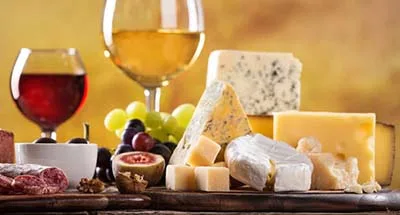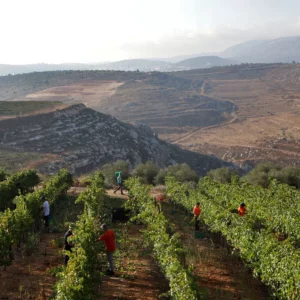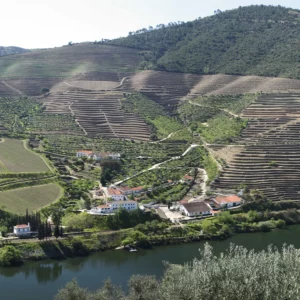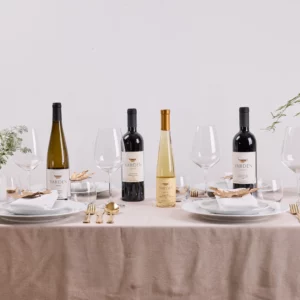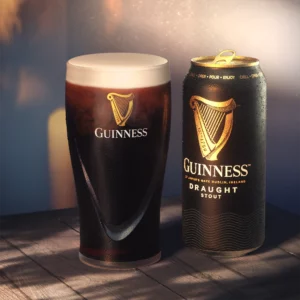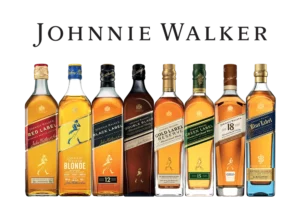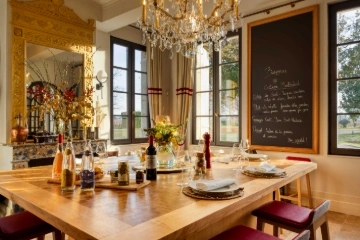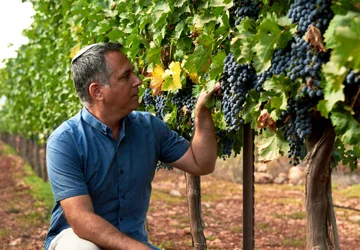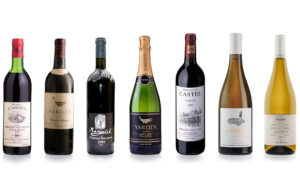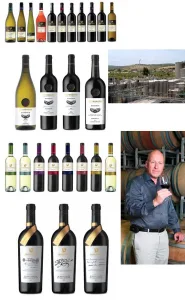There are the four products that really symbolize the culinary revolution in Israel more than any others. These are bread, wine, cheese and olive oil.
The festival of Shavuot gives us the opportunity to enjoy all four together. It is amongst other things a harvest festival celebrating the first fruits and the grain harvest. As it is a tradition to eat dairy products, what could be more appropriate to enjoy a selection of Israeli cheeses, a hunk of bread, with olive oil drizzled on it of course, washed down with some Israeli wines.
Once there was only a choice of white cheese, yellow cheese or salty cheese in Israeli supermarkets. Quality wines were few and far between. Olive oil was something one bought in a soft drink bottle in local Arab villages. Bread was called Achid, a rather basic version of black bread.
In the early 1980’s a few small dairies were founded which specialized in producing handmade goats’ cheese. Barkanit in the Jezreel Valley, Ein Kammonim in the Lower Galilee and Shay Seltser in the Jerusalem Hills were the pioneers that started the gourmet, boutique cheese revolution.
The wine revolution started with the Golan Heights Winery, also in the eighties, and the whole industry responded by moving to quality. The gourmet bread revolution started with Lechem Erez, (‘Erez Bread’) on the initiative of the famous Chef, Erez Komarovsky in the nineties. Then, Zeta from the Lower Galilee, Halutza from the Negev, both now large producers, and Eger from the Mount Carmel area, heralded a revival of quality Israeli olive oil.
Today there are no lack of specialist dairies, boutique wineries, regional olive presses and artisan bakeries that have sprung up all over Israel. The large producers and major brands have also responded, so production of cheese, wine, bread and olive oil in Israel today, is unrecognizable from even fifteen years ago.
There is a connection between these products that runs like a thread from Ancient Israel to modern times. The famous Persian poet Omar Khayyam summed it up correctly writing romantically about: “A flask of Wine, a Loaf of Bread – and Thou.” Go to Tuscany today and they will say that the holy trinity of Wine, Bread & Olive Oil is the basis of the Mediterranean diet.
However this all began in the Bible, when Wine, Bread & Olive Oil were the three mainstays of the economy. Wheat, Vines & Olive Oil were amongst the Seven Species blessed in Ancient Israel. When the spies sent by Moses returned after scouting out the Promised Land, they returned with a large bunch of grapes to illustrate that this was a land …”flowing with Milk and Honey.” This image of two men carrying a large bunch of grapes on a pole between them is preserved appropriately in the logos of both Carmel Winery and The Israel Tourist Board.
So I recommend that this Shavuot represents an opportunity to celebrate the flowering of gourmet Israel with these four most fundamental regional and historical products.
The world of cheese is probably more varied even than the world of wine. President De Gaulle said about France, “How can I manage a country with so many cheeses” It is a complicated world to learn, but there are basic guidelines for matching cheese & wines, which may be followed:
Red wines do not go with soft, fatty, creamy, salty or smelly cheeses.
Often dry white or even sweet wines will far better combinations.
Try and match the acidity of the wine and cheese.
Try & contrast the saltiness of the cheese.
To simplify the issue, most cheeses can be placed in the following categories:
Hard Cheeses
A hard cheese which is firm, and not aged too much, will go well with a medium to full bodied red wine. Cheddar and Parmesan are classic examples of fine red wine cheeses. However if the cheese is older and more pungent, the wine needs to be more mature and less tannic to avoid a clash. For this you will need older vintages.
Soft Cheeses
This is the hardest category to find a match. A creamy, fatty cheese will make most reds seem like water. The fat in the cheese will neutralize the tannin. Alternatively an oaky and tannic red wine will taste slightly metallic when these cheeses are ripe and runny. A pasteurized Brie or Camembert would best be served by a lightly oaked Chardonnay with good acidity. If you prefer a red wine, then one which is soft, full of fruit and with no astringency will be adequate.
Blue Cheese
Salt accentuates tannin so the myth that red wine goes with all cheeses is shown to be most false when a red wine is matched with a blue cheese. A sweet dessert wine or fortified wine, are far better matches. The salt and sweetness contrast to enhance both cheese and wine.
Goats Cheese
This category produces Israel’s finest cheeses. They have a strong character but can go with either white or red wines. The classic combination for a young goats’ cheese is a varietal Sauvignon Blanc. An aged goats’ cheese can be matched successfully with a mature well-structured but not tannic red.
Cooked Cheese
Cooked cheese goes better with white wine. A cheese sauce, like Mornay, will usually be matched well with an oaky Chardonnay, the weight of the sauce being matched by the intensity of oak. For a Fondue, a Sauvignon Blanc is recommended.
For a quiche, I recommend an unoaked chardonnay. A Pizza is best served with a fruity rosé.
Cheesecake
Finally with a rich New York cheesecake, there is nothing better than a fortified Muscat.
Sorry to disappoint red wine lovers, but as you can see, white wines are generally far better accompaniment to cheeses and dairy products than red wines. The reality does not chime with the popular image of blocks of cheese and carafes of red wine.
There are trends that indicate a return of interest in white wines. Certainly the quality and variety has improved no end. Many wineries are now making some really fine whites with typicity and authenticity, which was lacking not so many years ago.
Don’t forget that white wines are far more versatile to match with food than reds. They are also far more suitable for our hot climate than red wines. Who wants to sit on the balcony at home drinking a 15% alcohol, oak aged red wine on a hot summers evening, when a crisp dry white is also an option
So this Shavuot can also be a time to appreciate Israel’s quality white wines. It is a festival that does not only provide an excuse for an annual cheese and wine tasting, but it can also be a celebration of the four products which connect modern gourmet Israel with our Biblical roots. A glass of wine, a slice of cheese, a hunk of bread, a drizzle of oil….and thou.


